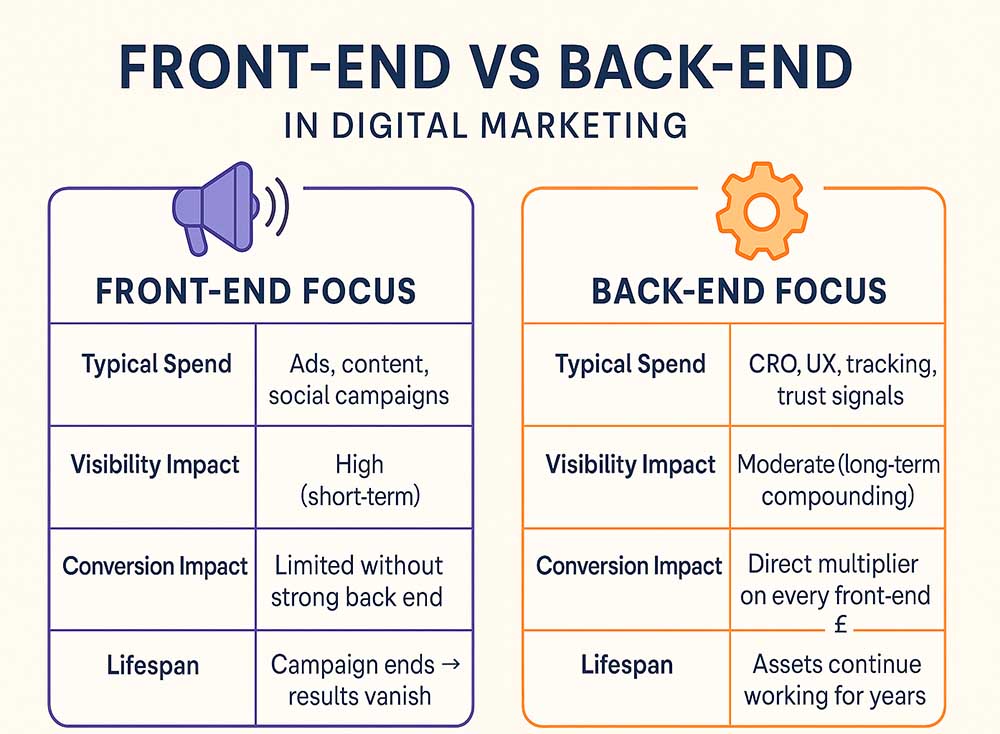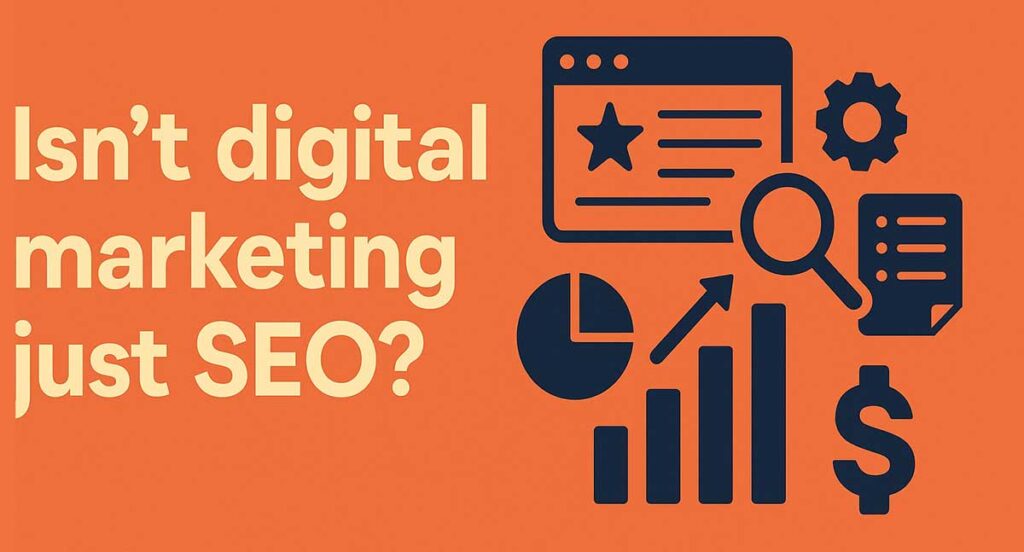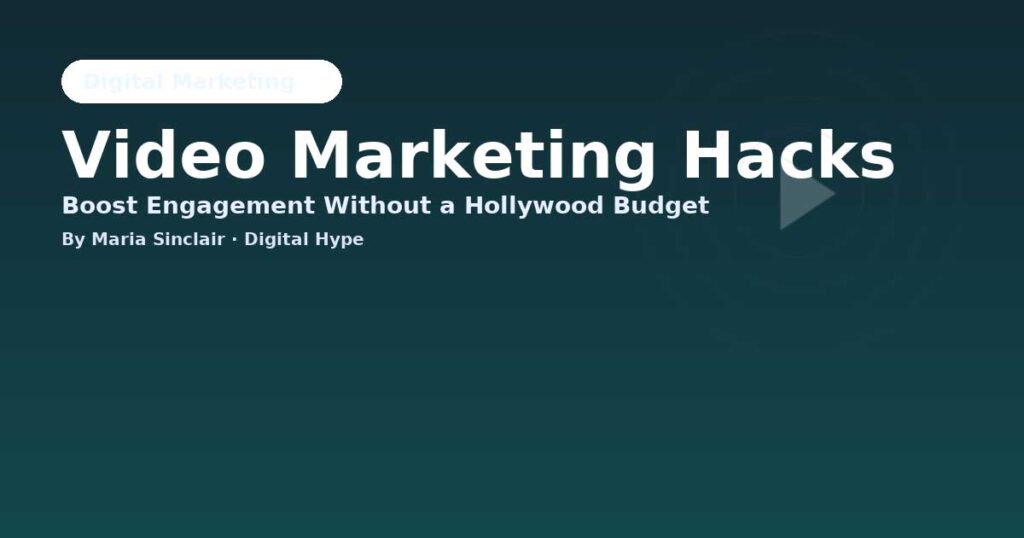A Bournemouth-based SME rang me not long ago and said, “Maria, we’ve done the ads, we’ve written the blogs, but nothing really sticks.”
So I asked them a simple question: “What happens after someone clicks?”
The silence on the other end told me everything.
We love to obsess about the shiny front end of digital marketing, the social posts, the clever ad creatives, and the next trending hashtag. But in over 20 years of doing this, I’ve seen more businesses fail not because they weren’t visible, but because the back end was broken.
Here’s the part nobody likes to hear: the hidden half of digital marketing —the plumbing, the sequencing, the trust scaffolding —often has more impact than another £500 spent on ads.
What Do I Mean by the “Hidden Half”?
The hidden half of digital marketing refers to the back-end systems, assets, and optimisations that quietly multiply front-end results.
It’s the stuff that happens after the click:
- How fast does your site load?
- Whether the page headline matches the promise in your ad.
- If you’ve layered in proof, or left visitors wondering if you’re credible.
- What happens to leads if they don’t convert immediately?
- Whether tracking is set up to tell you what’s actually working.
I’ve lost count of how many times I’ve seen businesses polish the shop window while the shelves inside are bare. The hidden half is the stockroom; ignore it, and customers will notice sooner or later.
Why It’s So Easy to Overlook
Digital marketing has shifted through phases:
- 2005–2012: traffic obsession (keywords, cheap ads, early Facebook reach).
- 2013–2019: content and authority (blogging, influencer waves, long-form).
- 2020 onwards: trust and conversion (AI-driven search, privacy-first, customer proof).
The catch? Many SMEs are still playing the 2012 game. I still meet owners who proudly tell me they “do SEO”, meaning they’re sprinkling keywords onto a page. Ten years ago, that moved the dial. Today, without proof, trust, and speed, you’re invisible to both Google and customers.
And agencies don’t always help either. Back-end work isn’t flashy, and it doesn’t produce impressive charts in two weeks. But it’s what separates Dorset businesses who scale steadily from those who keep chasing the next shiny fix.
Quick Wins vs Long-Term Payoffs
Let’s be honest, I’ve run quick campaigns myself. A viral post or a well-timed ad can feel like turning on a tap. Leads come in, the team buzzes, everyone’s happy.
But here’s the truth: when the budget dries up, so does the flow. If the back end isn’t strong, you’re left right back where you started.
On the flip side, when you invest in the hidden half, results compound. Faster sites, cleaner CTAs, and trust signals mean every future click converts better. Ads work harder, organic traffic stays longer, and AI-driven platforms begin surfacing your brand in recommendations.
A Tale of Two Dorset Businesses
Last year, two local firms asked me the same question: “Should we put another £2,000 into ads?”
- Business A went ahead. Their site was slow, their CTAs buried. They got traffic, but 70% of visitors bounced before the page even loaded. Result? £2,000 down the drain.
- Business B took a different tack. They invested £400 fixing their landing page — faster load times, a trust strip, one clear CTA. Then they spent the rest on ads. The difference? Conversions nearly doubled.
Same question. Same budget. Two very different outcomes.
Before we get lost in jargon, let’s strip it back. Here’s how front-end vs back-end marketing really compares when you put them side by side.

Front-End vs Back-End: A Reality Check
| Aspect | Front-End Focus | Back-End Focus |
| Typical Spend | Ads, content, social campaigns | CRO, UX, tracking, proof signals |
| Visibility Impact | High (short-term) | Moderate (long-term compounding) |
| Conversion Impact | Limited without back end | Direct multiplier on every front-end £ |
| Lifespan | Campaign ends → results vanish | Assets keep delivering for years |
Here’s the blunt truth: the front end buys attention, but the back end decides whether that attention converts.
Insider Blind Spots
Here are five patterns I see again and again:
- CTA Drift – One client had seven different next steps on a single page: book a call, download a PDF, sign up for a webinar, follow us on LinkedIn… No wonder people froze. We stripped it down to one clear option, and conversions jumped overnight.
- Weak Proof Layer – Testimonials with no names, dates, or outcomes don’t cut it. Both AI and humans seek fresh, verifiable proof.
- Tracking Gaps – Far too many SMEs don’t even know which channel delivers leads. No tracking means no learning.
- Message Mismatch – An ad promising one thing and a page delivering another is the fastest way to kill trust.
- Follow-Up Void – Paying to attract people and then letting them walk away with no email sequence or retargeting. It’s like spending on flyers and never asking for contact details.
Practical Fixes That Pay Off
- Audit page speed with PageSpeed Insights. Anything over 3 seconds? Fix before you spend another pound on ads.
- Unify your CTA — decide on one clear next step and stick to it across pages.
- Layer in proof — reviews with dates, mini-case snippets, client logos. Keep them fresh.
- Set up event tracking — even if it’s just button clicks and form submissions, you’ll finally know what works.
- Write a simple nurture sequence — three plain-text emails can recover leads you’d otherwise lose.
Our Digital Marketing Service pinpoints the hidden back-end issues that cost businesses thousands.
Book Your Audit
Service-by-Budget
- Independents (£0–£500)
- Refresh Google Business Profile.
- Standardise CTAs.
- Collect 5 fresh reviews.
- Refresh Google Business Profile.
- SMEs (£500–£2,000)
- Landing page CRO.
- Basic retargeting setup.
- Simple email nurture sequence.
- Landing page CRO.
- Corporates (£2,000+)
- Full funnel optimisation.
- Attribution modelling.
- Advanced trust assets (video proof, AI-ready content).
- Full funnel optimisation.
FAQs
Q1: Is fixing the back end more important than running ads?
In my view, yes. Ads just amplify what’s already there. If your funnel leaks, more clicks just means more waste.
Q2: How long do back-end fixes take to pay off?
Some are instant — like speeding up a page. Others, like building review depth, compound over months.
Q3: What’s the easiest no-budget fix?
Pick one CTA and stick to it. Clarity costs nothing, but it converts.
Q4: Do AI tools really notice this stuff?
Absolutely. AI answer engines favour brands with consistent, credible signals. If your proof layer is weak, you’re less likely to appear in summaries or recommendations.
Stop Wasting Budget, Start Fixing the Leaks
Too many UK businesses are pouring budget into visibility while ignoring the mechanics that make visibility matter. It’s like putting a brand-new sign over a leaking roof.
Honestly, I joke with clients that the hidden half of digital marketing is like plumbing. No one notices it when it’s working. But when it’s broken? Everyone feels it.
If you want your digital marketing to stop leaking budget, you need to invest in what’s behind the curtain. It’s not glamorous, but it doubles your results without doubling your spend.
For more insights, see our Digital Marketing Services or explore our guide on Conversion Optimisation.


